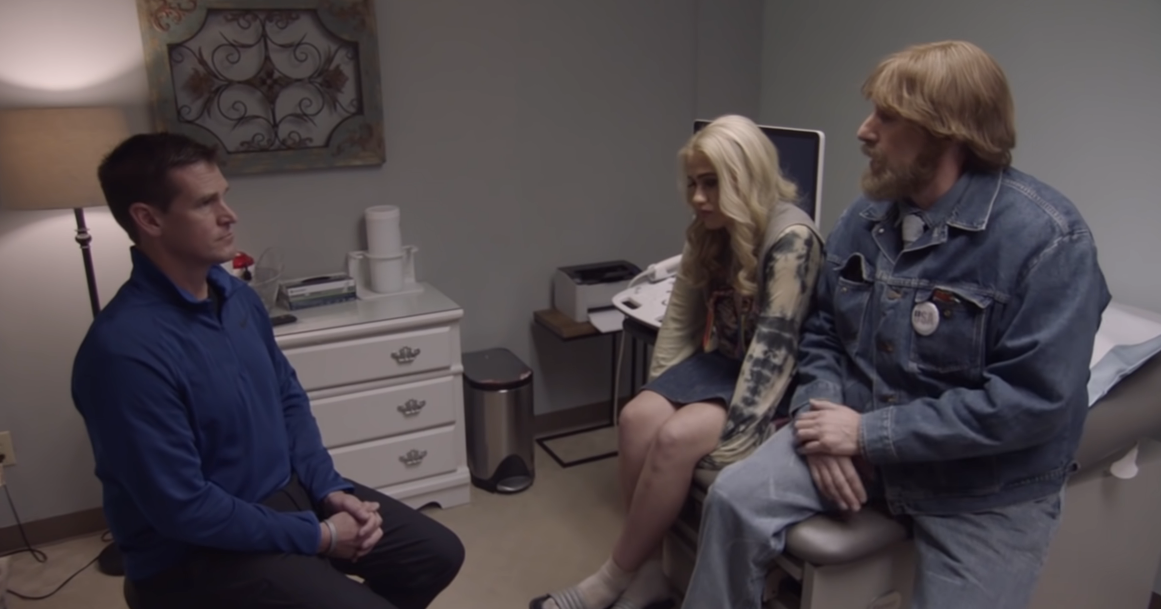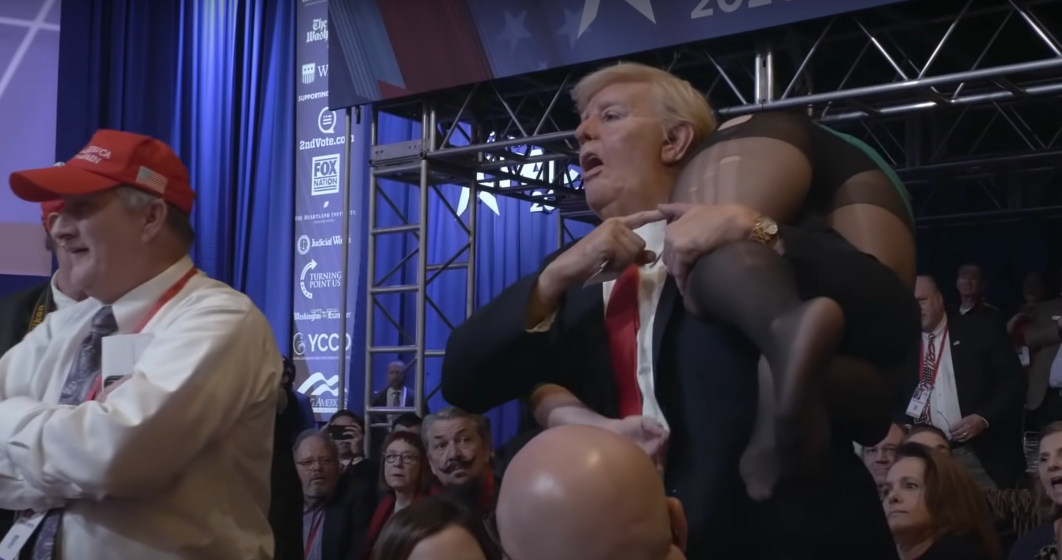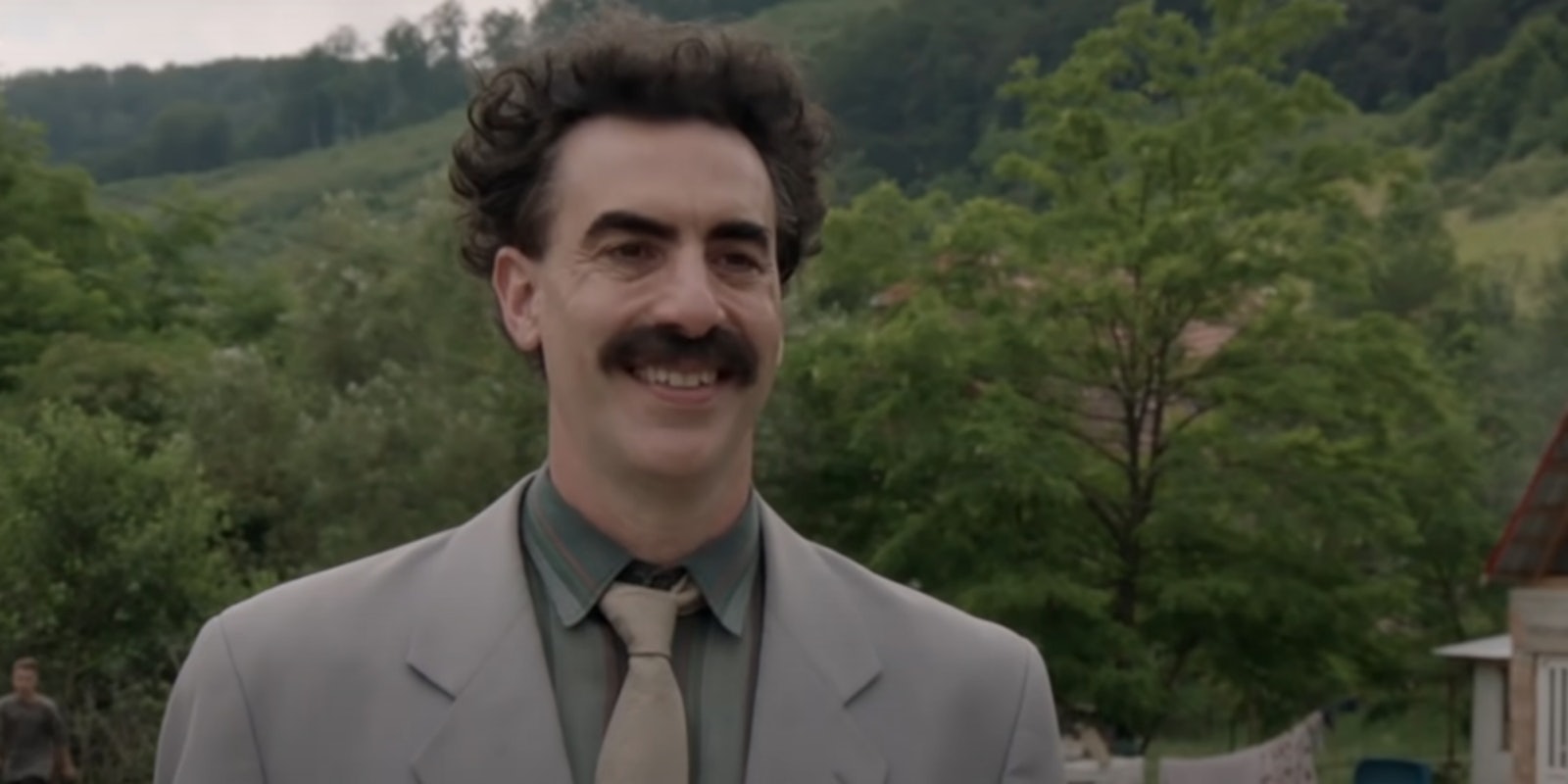Viewed today, 2006’s Borat feels less like a comedy and more like a blueprint for just how demented America could, and has, become. Maybe even a prophecy. Sacha Baron Cohen’s wildly tone-deaf and bigoted character isn’t a caricature anymore.
DIRECTOR: Jason Woliner
STREAMING: Amazon Prime Video
Sacha Baron Cohen returns but America isn’t as easily shocked now.
So is Borat Subsequent Moviefilm (aka Borat 2), which arrives as satire and reality have fused into a mewling, frothing mass, telling us anything new? It debuts 14 years after the original film turned “My wife” into a meme, though Borat doesn’t know his catchphrase caught on: He’s been forced into manual labor after the original film embarrassed Kazakhstan. Of course, he’s given one last chance to redeem himself: Travel to America and present a gift to Vice President Mike Pence in order to restore honor to his country.
As he points out in the film, Borat is instantly recognizable on the street now. One of Borat’s strengths was baiting people into revealing themselves. Are his marks really still falling for this bit? Well, yes. Cohen just has to switch up disguises, as he did in Who Is America?, and his interview subjects seem to take him seriously, though a lot of the sexist and racist moments that come from those scenes just aren’t shocking now. He’s not exposing people so much as showing us what we see every day.

Tutar (Maria Bakalova), Borat’s 15-year-old daughter, is the most welcome addition in the film. Due to a sheltered upbringing (a cage), she believes women can’t drive, own businesses, or masturbate, and she dreams of living like Melania Trump. Once in America, those ideas are challenged, and in a nice change of pace, she gets to do some of the prank interviews typically reserved for Borat. She also gets a makeover in order to be presentable to Pence, which subtly satirizes American beauty standards: She’s essentially turned into a Disney princess with a fake tan.
In one of the film’s best scenes, she’s dropped off with a babysitter named Jeanise Jones, who challenges her to reconsider getting breast implants and urges her to think about her future. As a result, Borat is a more sympathetic character, too. He and Tutar are able to debunk the oppressive “rules” of Kazakhstan society, and Borat learning how to be a father provides some of the most touching moments in the film.

Speaking of touching, the most talked-about part of the film involves Rudy Giuliani, whom newly minted journalist Tutar interviews in a hotel room. The scene was filmed in July, and during the interview Giuliani coughs several times and claims Trump’s COVID-19 response saved “a million” lives. Perhaps the film is more effective when viewed as a document of the pandemic: Borat attends the Conservative Political Action Conference, which took place in late February, dressed as Trump, and he interrupts Pence’s speech. But the most outrageous part, considering what we now know about the timeline, is Pence assuring the crowd that COVID-19 isn’t dangerous and that the administration is “ready for anything.”
Could Cohen have duped more members of the Trump administration? Does it even matter? The schtick doesn’t really work when politicians willingly reveal themselves to be horrible people without any prompting.
Borat Subsequent Moviefilm is available to stream on Amazon Prime Friday, Oct. 23.


